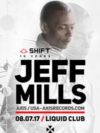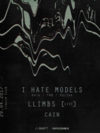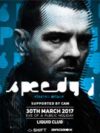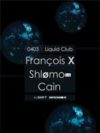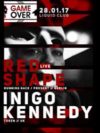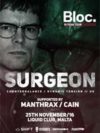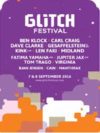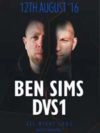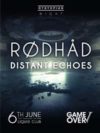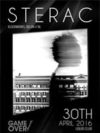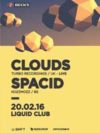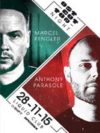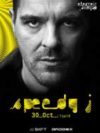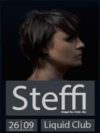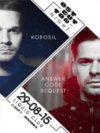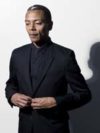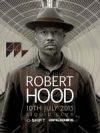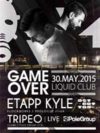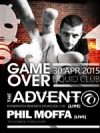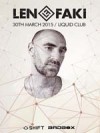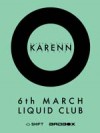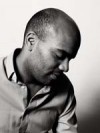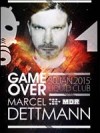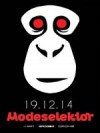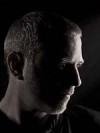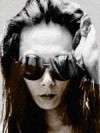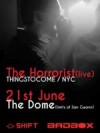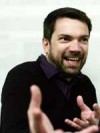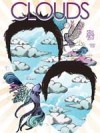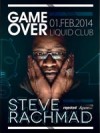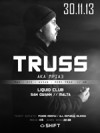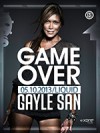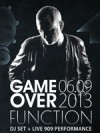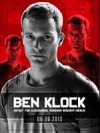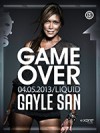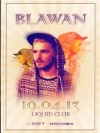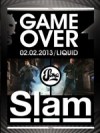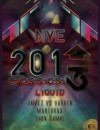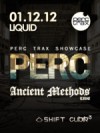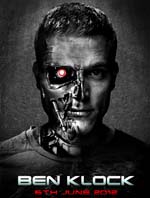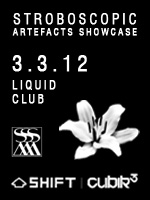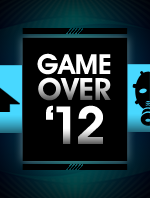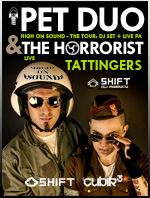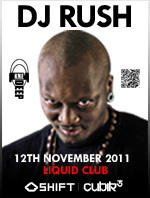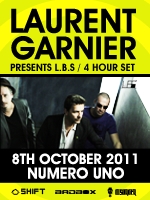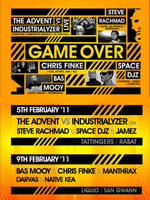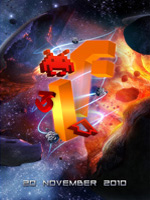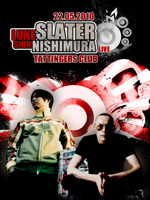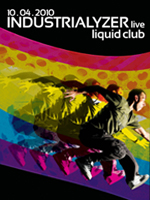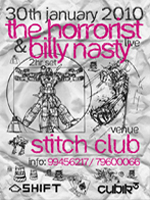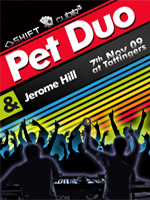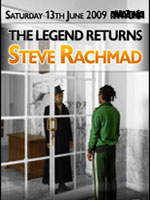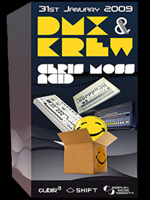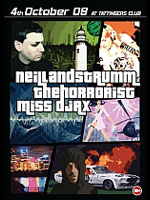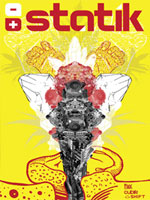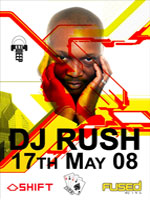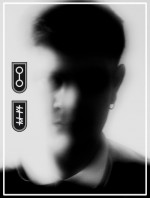Breaking through: Clouds
Rowdy house and techno by way of small-town Scotland: Andrew Ryce meets the young Turbo-signed duo known as Clouds.
“There’s no 17 year-olds who are into really good music. It takes until you are 20,” Clouds member Calum MacLeod says over Skype, as though he were a world-weary veteran. He’s 21. His counterpart, Liam Robertson, is 22.
Despite their age, Clouds already have an enviably strong track record. Gaining more attention with each release since their first outing, on Blood Music in 2010, they have made a name for themselves with an uncompromising outlook on dance music. Over several EPs for Turbo, they’ve developed a savage sound that’s moved towards techno with a distinctly destructive attitude. Now they’re about to release their first album, the excellent Ghost Systems Rave, a record which sees them bash their way through the history of hard-edged dance music.
Clouds are from Perth. Not the Australian city, but a town in Scotland that’s home to about 44,000 people. “There wasn’t ever much going on,” says MacLeod. He’s since moved to Dundee, Scotland’s fourth largest city. Robertson remains in the sleepy riverside town. Despite living in such a “sheltered” place, as they call it, they haven’t really missed much since they started releasing their snarling techno a few years ago. They’ve been producing since before they were old enough to go out anyways.
The two have been making music since they were teenagers. “My dad was into house music,” says MacLeod. “Every time I would go and see him he would be playing a lot of jazzy house stuff. I didn’t like it when I was younger. I didn’t understand it. I was always freaked out by house. There was a lot of talking and other stuff in it.”
His proper introduction to dance music was Daft Punk’s Discovery. The pair got into the landmark 2001 record a few years after its release, when they were in their mid-teens. “‘Harder, Better, Faster, Stronger’ was just like nothing I had ever heard. I was into trance music when I was younger, ATB and stuff like that, but that was the only dance music. [This] was really unique to me,” says MacLeod. “I didn’t appreciate it… back then, I just thought, well, that’s a robot talking,” Robertson deadpans. “We were just really young.”
Their dance music journey also led them into the burly arms of hardstyle. They and their friends would sit around, “take a song, and then get about 30 or 40 acapellas and just throw them all in [one hardstyle track],” Macleod explains. From there they became obsessed with Justice and their Ed Banger cohorts before heading down the techno path they’re currently negotiating. They’re not big fans of hardstyle anymore; they still see its appeal, but it was a culture they experienced entirely in absentia. “I think even if we had been able to go to a hardstyle party, and see how it all went, then we would have snapped out of it,” says Robertson.
Their first encounter with dance music outside the home was not at a nightclub, but a festival—specifically, the Slam Tent at T in the Park. The sights and sounds stole their hearts, and soon they found electro house, later delving into what they themselves call “underground” techno. The duo’s love of electro house and big room techno informed the scrappy, barbed-wire dance music they were producing, which they found a home for on Tiga’s Turbo Recordings.
In line with Turbo’s own aesthetic at the time, their early music, like the Numbers EP, was so aggressive it was almost humourous. “There was melody on those tracks, but horrible melodies. I think, now, they’re kind of trancey,” says MacLeod. “I think with every release we were influenced by more and more artists. When we made our first music, we were only listening to, like, Jack Beats or something. Now we’ve taken influences from other artists we’ve discovered along the way. I remember one of the first techno tracks we started playing was Len Faki’s remix of “Stranger To Stability” by Dustin Zahn. It’s like stadium techno.”
Starting out, Clouds were professional amateurs. They didn’t have a studio. They still don’t have monitors and record their club-destroying tracks purely on headphones. Robertson has a MIDI controller that “collects dust and doesn’t do anything.” “In terms of hardware and stuff, there’s nothing,” he says. “It’s the same as when we started, but [now] Ableton instead of Fruity Loops—and better headphones.”
Their spot on Turbo’s 2012 compilation New Jack Techno gave them a new alignment—something more purely techno, a take on the genre that was more about industrial crunch than electro thrash. Their track “Gang 49” was easily the noisiest on that record, figuring them as the proverbial brats amongst the label’s promising roster of newcomers. The work that followed, especially Tannhauser Acid Works, only sharpened their attack. Their transition mirrored Turbo’s own, moving into harder, less electro- affiliated music. “I think they’ve actually been following us into it,” MacLeod says. “It’s hard to say why we’ve gone techno. We like it, but I don’t know what made us do it.”
With Turbo as a comfortable home base, an album seemed like the logical next step. Like most dance music artists, the duo felt it necessary to approach their LP differently than the floor-focused EP releases. The biggest change? “Well, we made it together—like, totally together,” says MacLeod. “All of our EPs, we start them separately, because we don’t live together, and don’t have a studio. One of us would do most of the track, send it over, get some feedback, and then just finish it. 70% of the track we do alone, and the other 30% is collaboration.” To aid the writing process, Turbo rented them a studio space deep in a converted barn in the Scottish countryside.
“It was really amazing,” MacLeod says. “It was almost too nice. We started off looking for something really dingy, hoping that it would help us to make some dark album, but we ended up thinking, ‘nah, we’d like a fridge here…’ It snowed a lot. We almost thought we might not get back. There’s some field recording of us just walking and stuff, just… doing things in the snow.”
Their environment might have been nicer than they were expecting, but it didn’t seem to effect the album’s mood. Ghost Systems Rave is every bit as harsh and unforgiving as their earlier work, but with a much wider and more mature outlook on techno. On tracks like “Future 1” they appropriate the spooky stabs of early rave music, and elsewhere they carefully tune their sound into lean, efficient bangers.
“We didn’t really have an artistic concept behind Ghost Systems Rave,” says Robertson. “We figured we’d just give ourselves two weeks in our barn and release what we came up with.” The record sounds like it was recorded in a spirited blitz, blasting through ideas in just three or four minutes per track. Recording the album in the barn with a limited time span lent it an urgency that writing EPs from home just didn’t have. That, and “people have short attention spans,” according to MacLeod. Though some of its moments feel more like sketches than fleshed-out songs, the album has a liquid flow that your average techno record lacks.
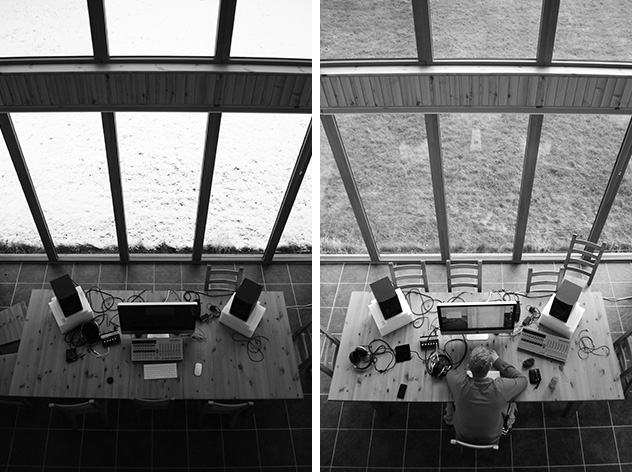 Similarities could be drawn with fellow UK acts like Blawan and Truss, but Cloud’s music shares less with modern industrial techno than it does with the IDM acts like Aphex Twin that MacLeod says they cherish. Working with bewitching synth melodies, murmuring voices and sneaky sound effects, Ghost Systems Rave is detail-oriented music in spite of its crunch. They’re obsessed with technology, and their music concerns itself with machine voices and what sounds like robots. “All that robotics stuff, I think that’s due to the Warp influence… also, we aren’t very musical,” says MacLeod bluntly. “We can’t play guitar on tracks, or play the piano… we try to make it more interesting with strange sounds and textures.”
Similarities could be drawn with fellow UK acts like Blawan and Truss, but Cloud’s music shares less with modern industrial techno than it does with the IDM acts like Aphex Twin that MacLeod says they cherish. Working with bewitching synth melodies, murmuring voices and sneaky sound effects, Ghost Systems Rave is detail-oriented music in spite of its crunch. They’re obsessed with technology, and their music concerns itself with machine voices and what sounds like robots. “All that robotics stuff, I think that’s due to the Warp influence… also, we aren’t very musical,” says MacLeod bluntly. “We can’t play guitar on tracks, or play the piano… we try to make it more interesting with strange sounds and textures.”
Though their profile has risen quickly, Clouds are still based in small-town Scotland. Perth doesn’t have a large club scene (though they have managed to played a gig there), the closest record shop is 90 minutes away in Glasgow, and traveling for DJ bookings is frustrating: they have to take several trains and a bus to reach the airport. Gigging more frequently and starting to appear at festivals (including the Slam Tent), they’ve begun working on a live set, citing Animal Collective as an inspiration. And apparently some of the bigger clubs in the world have grow more interested in what they’re doing.
But even as the techno world begins to embrace them, Clouds seem to keep themselves at a slight distance. They’re quick to note their remove from what they call “techno snobs.” In a 2011 interview they remarked about how they weren’t making “serious music,” a tricky word that they dance around a lot. They treat their music seriously, sure, but they’re not certain their audience does. “You’ve made this piece, you’ve put all your heart into it, and it’s basically getting played to these people that are just fucked and don’t care,” says MacLeod. “They just want to dance. They don’t care that you sampled 2001: A Space Odyssey, and that you put the vocals in and did all these cool things. I don’t know if that’s because of our experiences with clubs in Glasgow and Edinburgh, but it’s hard to take something like that seriously.” Robertson interrupts his train of thought. “But it is extremely serious. We’re trying to make it our job.”
Source: RA
Words: Andrew Ryce




